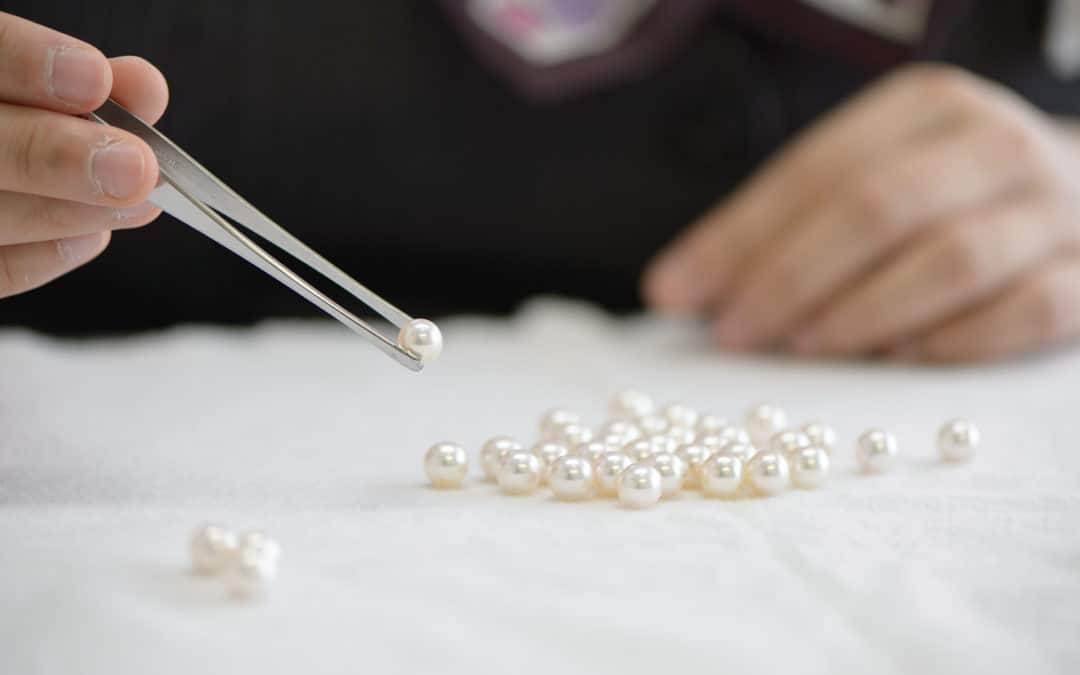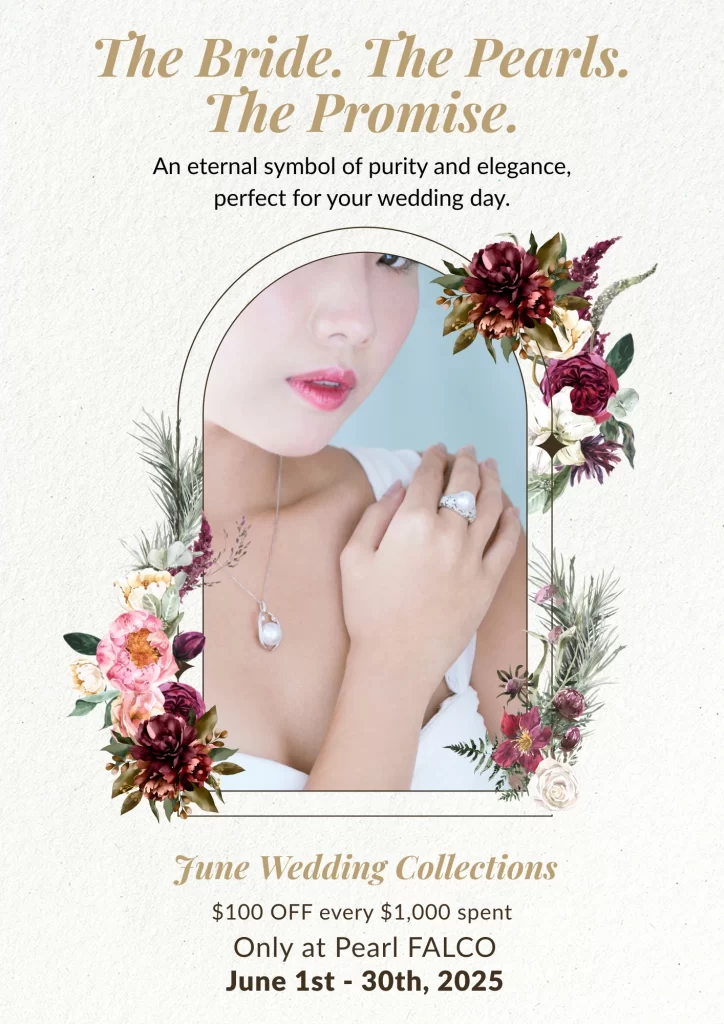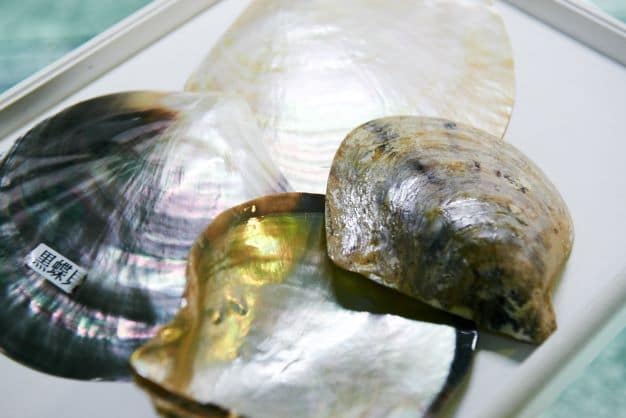
Among the seven criteria used to assess pearl value – Luster(shines and Interference color), Nacre(Thickness), Size, Shape, Color, Blemishes, and Uniformity – color stands out as a significant determinant. Today, we delve into the fascinating realm of pearl colors, a crucial aspect of pearl evaluation. Despite the common perception of pearls being predominantly “white” or “creamy,” their formation is influenced by various factors such as environmental conditions, mollusk type, and cultivation methods, resulting in a mesmerizing array of colors.
Mother Oyster Species:
Different species of clams and oysters contribute to the diversity of colors. The outer part of the mollusk, known as the “lip,” plays a crucial role in determining the pearl’s color, which is planted together with nucleus and produce nacre to cover up nucleus. For instance, the Pinctada Margaritifera species, South Sea Black Oyster produces the famed Black Pearls(Tahitian Pearls), while the Pinctada Fucata, Akoya Oysters yields Akoya Pearls known for their exceptional luster and deep hues.
Nacre:
Nacre, the primary substance forming pearls, grows over the irritant inside the mollusk. The thickness, finesse, and evenness of nacre influence the pearl’s overtones and the richness of its color.
Human Intervention:
Modern cultivation techniques allow pearl farmers to manipulate colors during the cultivation process. Techniques such as grafting tissues from different oyster species or post-cultivation treatments like dyeing and irradiation enhance the natural hues of pearls.
Environmental Factors:
Environmental conditions, including water temperature, salinity, and nutrient availability, impact the formation of pearl colors. Warmer waters tend to produce pearls with richer hues, while cooler waters may result in lighter colors with fine nacre.
Cultivation Methods:
Advancements in pearl cultivation techniques have expanded the range of colors available in cultured pearls. Farmers can now control various parameters, such as the type of nucleus used, to influence the final color of the pearls.
Natural Variations:
Despite human intervention, natural variations in colors still occur. These variations add to the allure of pearls, making each one unique and distinctive.
Symbolism of Pearl Colors
Pearls have played a significant role in various cultures throughout history. In ancient civilizations, pearls were considered symbols of wealth, royalty, and divine favor.
Today, they continue to hold cultural significance, with different colors carrying specific meanings and associations, as black pearls are associated with mystery and elegance.

White Pearl Color
White pearls, prevalent across various oyster species, exhibit subtle variations with cream, silver, or pink overtones, and occasionally rare blue or green hues. Symbolizing purity and innocence, white pearls complement diverse jewelry and fashion styles. In many cultures, white pearls are also seen as a symbol of wisdom and clarity, making them a popular choice for those seeking to bring balance and understanding into their lives. Whether you’re entering a new phase in life or simply wish to embrace a sense of renewal, white pearls are a perfect choice. They are timeless, versatile, and carry a depth of meaning that makes them a valuable addition to any jewelry collection.
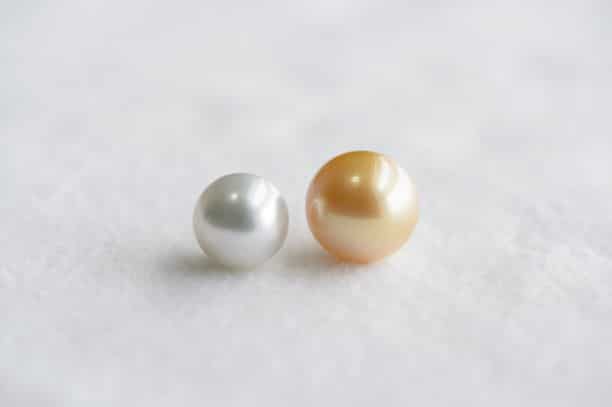
Gold Pearl Color
Gold South Sea Pearls, born from South Sea Oysters, the Gold-Lipped Variant of the Pinctada Maxima Oyster, symbolize luxury and wealth, often accompanied by rose, green, or bronze overtones, signifying prosperity and distinction. Their rich, golden hue is often associated with financial abundance and achievement, making them a powerful talisman for those seeking to attract prosperity and accomplish their goals. In many cultures, golden pearls are seen as a symbol of the sun, representing warmth, vitality, and life-giving energy.

Black Pearl Color
Cultivated primarily by South Sea Oysters, black pearls exude mystery and elegance, featuring blue, rose, silver, and peacock overtones. Symbolically associated with sophistication and power, black pearls make bold fashion statements. Black pearls are more exotic and rare, making them a symbol of uniqueness and individuality. In various cultures, black pearls are believed to ward off negative energies and provide protection to the wearer.
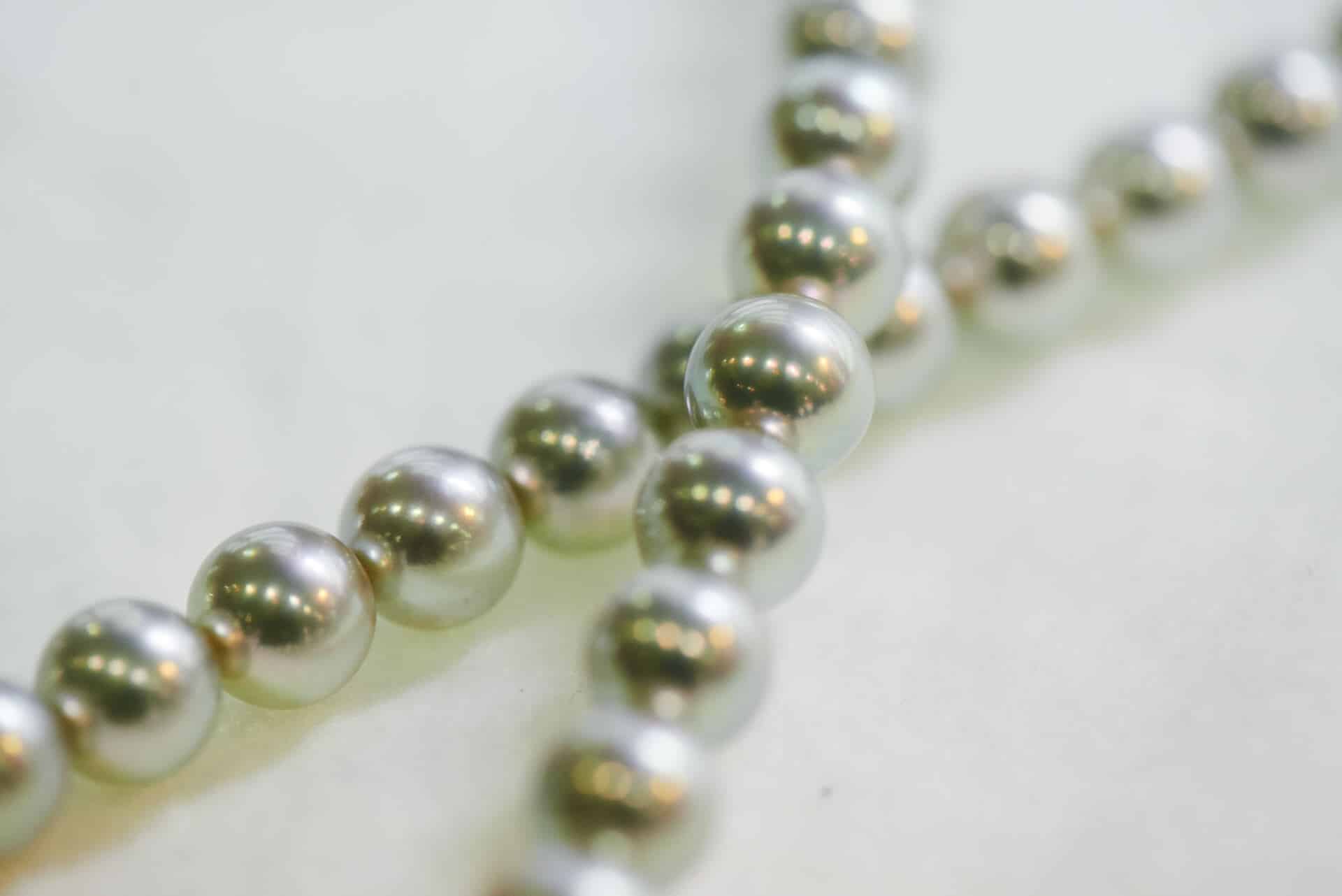
Blue Pearl Color
Blue pearls are among the rarest and most coveted varieties. Their unique hue evokes a sense of calmness and tranquility. Adorned with silver, green, rose, and violet overtones, blue pearls symbolize peace and tranquility, being a symbol of calm, peace, and serenity. Their cool, calming hue evokes a sense of relaxation and balance, making them an excellent choice for those who wish to reduce stress and find inner peace.
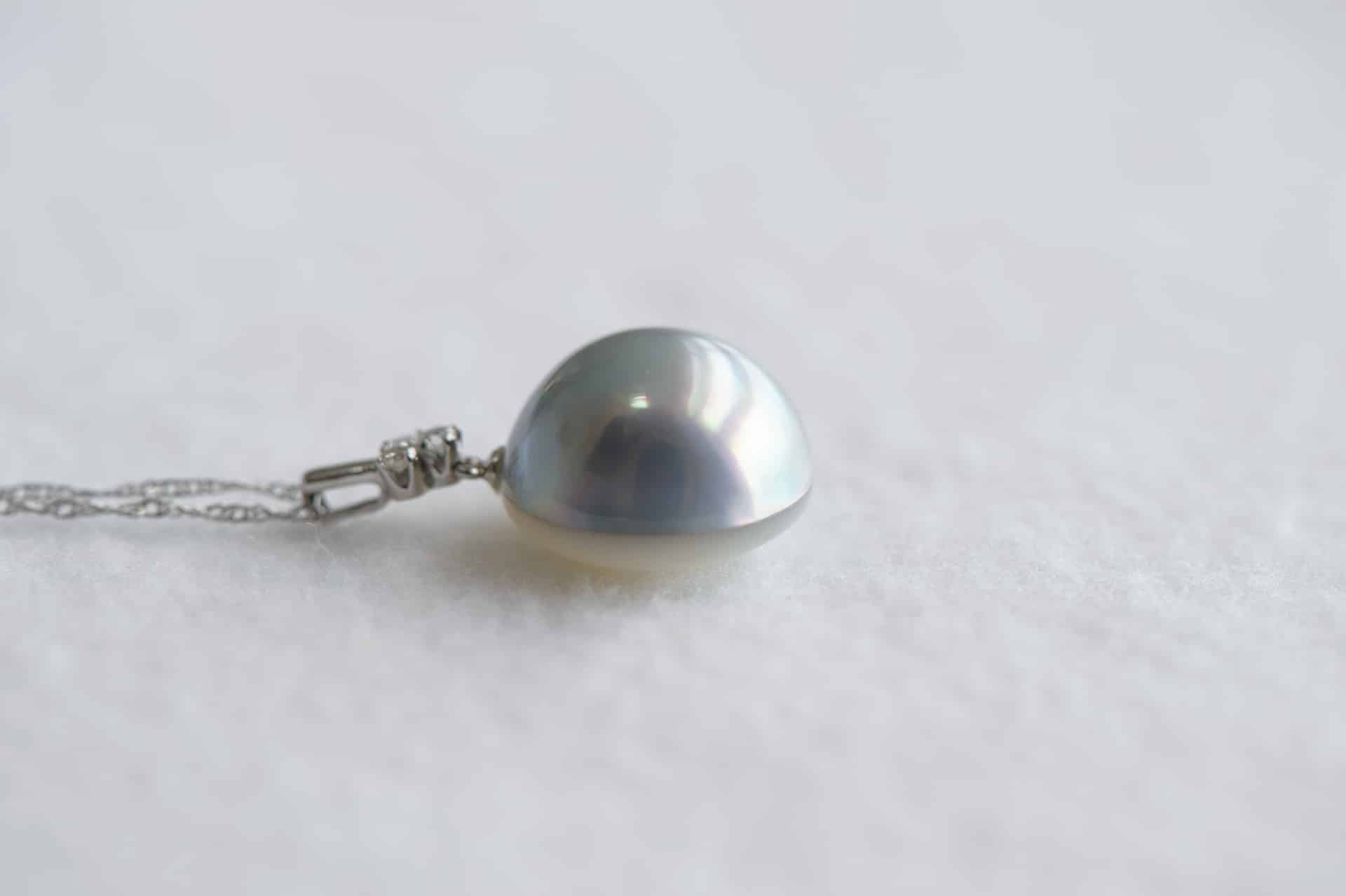
Rainbow Pearl Color
Rainbow Mabe Pearls offer a unique spectrum of colors, symbolizing strength, energy, and vibrancy with their intense and vibrant hues. Rainbow colors in pearls refer to the iridescent play of colors that can be seen on the surface of the pearl. This phenomenon is called orient and is highly prized in the world of pearls. The rainbow-like sheen is caused by the diffraction of light as it passes through the multiple layers of nacre and reflects off the surface.
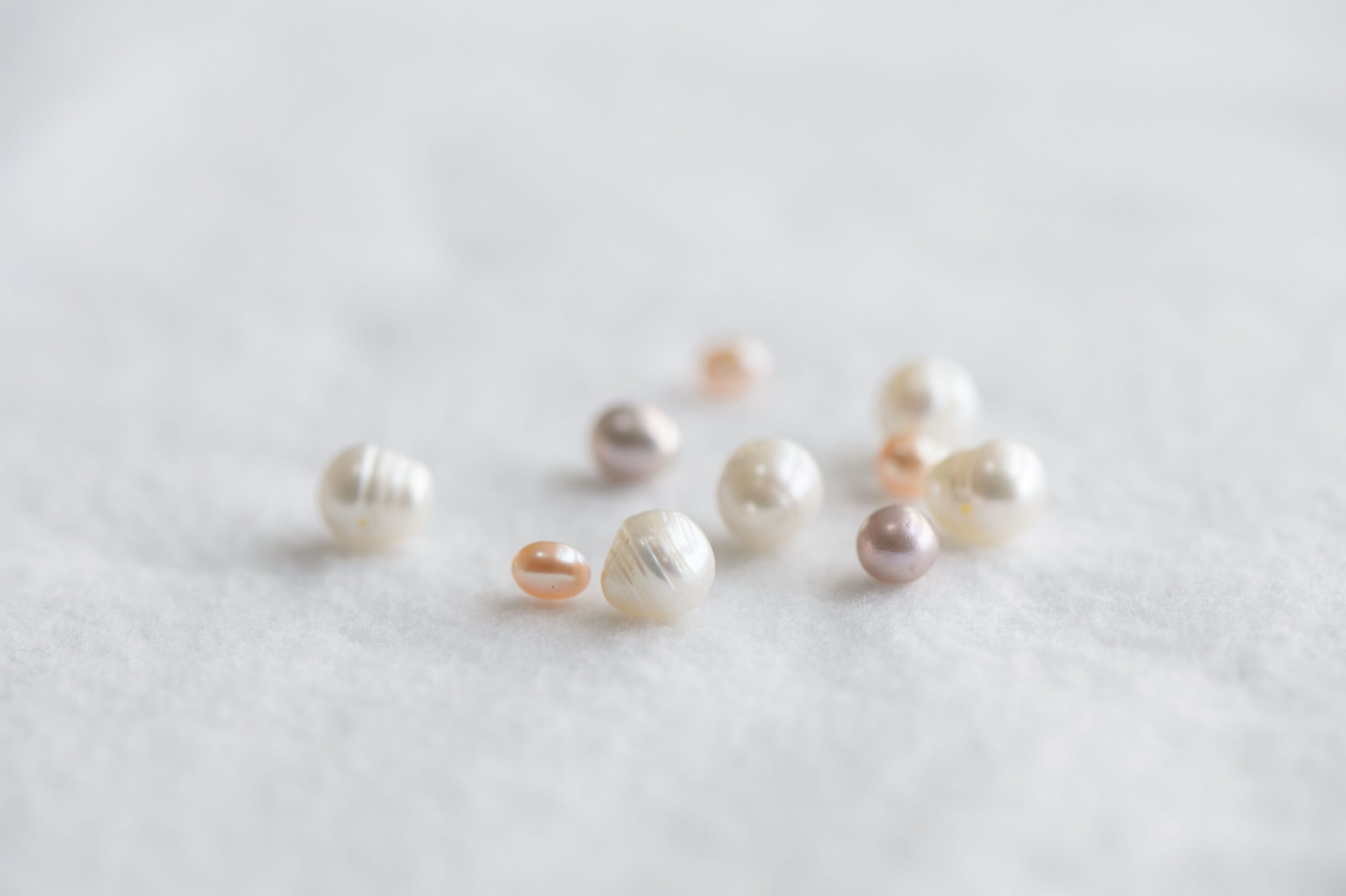
Pink & Lavender Pearl Color
Pink Pearls are often associated with love, compassion, and nurturing energy. Their soft, warm hue radiates tenderness and empathy, making them an ideal choice for those who wish to enhance their loving relationships or open their hearts to new connections. Lavender Pearls are a symbol of creativity, wisdom, and inspiration. Lavender pearls are believed to stimulate the mind and enhance creativity, making them a powerful tool for those who work in creative fields. Many Freshwater pearls have Pink or Lavender color.
Evolution of Pearl Jewelry Design
The exploration of colors has inspired innovative approaches to jewelry design. Designers experiment with different combinations of pearls and metals to create pieces that reflect modern tastes while honoring traditional craftsmanship.
Crafting Timeless Elegance with Pearl FALCO
At Pearl FALCO, we integrate pearl overtones, color depth, and richness to create exquisite jewelry designs. Our design process begins with a narrative, blending pearls with gold, silver, diamonds, and other materials to craft harmonious works of art.
Embrace the Timeless Allure of Pearls with Pearl FALCO
Pearls have captivated humanity for millennia, embodying elegance and sophistication. As a multi-generational family-owned business with nearly 40 years of experience, Pearl FALCO is dedicated to sharing our expertise in pearl jewelry selection and design. Visit our Pearl FALCO Singapore Gallery to experience the magic of pearls firsthand and embark on a journey of timeless elegance.
Trust in Pearl FALCO
At Pearl FALCO, trust is paramount. We are committed to enriching the lives of our customers by sharing our knowledge and passion for pearls. Whether browsing our online gallery or visiting us in person, let Pearl FALCO guide you towards informed buying decisions and unforgettable experiences.
Pearl FALCO eagerly awaits the opportunity to share our passion for pearls with you. Visit us today and discover the epitome of elegance and sophistication in every pearl.

